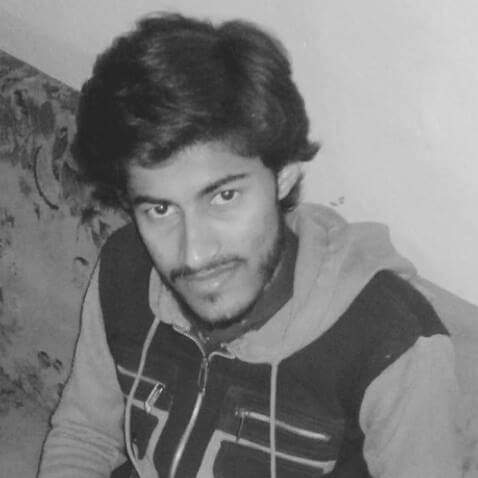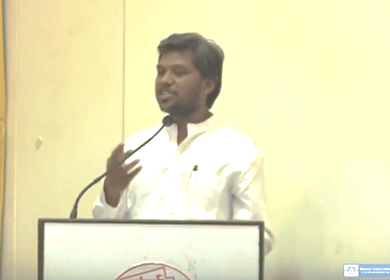Pranav Kuttaiah
 The Karnataka elections of 2018 will be remembered for a number of reasons. Notwithstanding the post-election drama of hastily built coalitions, gubernatorial bias, midnight hearings at the Supreme Court, attempted horse-trading, floor tests and everything in-between, the election itself provided enough fodder to have political scientists scratching their heads trying to make sense of what was going on. The state also provided the grounds for testing what has long been speculated as the only viable counter-polarization technique to Hindutva: dispossessed caste consolidation. The incumbent Chief Minister, Siddaramaiah, banked on a strategy colloquially called AHINDA, a Kannada acronym for minorities, backward classes, and Dalits and met with relative success despite being unable to convert that into winning seats.
The Karnataka elections of 2018 will be remembered for a number of reasons. Notwithstanding the post-election drama of hastily built coalitions, gubernatorial bias, midnight hearings at the Supreme Court, attempted horse-trading, floor tests and everything in-between, the election itself provided enough fodder to have political scientists scratching their heads trying to make sense of what was going on. The state also provided the grounds for testing what has long been speculated as the only viable counter-polarization technique to Hindutva: dispossessed caste consolidation. The incumbent Chief Minister, Siddaramaiah, banked on a strategy colloquially called AHINDA, a Kannada acronym for minorities, backward classes, and Dalits and met with relative success despite being unable to convert that into winning seats.
During the course of the election campaign, I visited almost every district of the state and spoke to a range of people. In these sorts of situations in southern states, I’m less interested in who’s going to win. Non-Hindi and non-Hindu people are never going to ‘win’ anything through a BJP-Congress fight – but I’m more interested in how these regions change as this cancerous idea of India begins to spread.
Sample this, which is what James Manor wrote about BJP’s victory in the state in 2008:
“The BJP’s victory owed next to nothing to Hindutva. Here as in most other state elections outside Gujarat, it was seldom mentioned because it has never evoked a popular response. When Narendra Modi came to speak, BJP leaders were so anxious about poor turnouts at his rallies that they located them in pockets where the party had a strong following. But even there, he fell flat. In one venue on the coast, the party prepared for a crowd of 50,000 and only 5,000 came”.
For me, the elections offer moments like these to reflect and to think of how one can reverse what’s happened in these ten years or insulate oneself from further damage while remaining in India.
The sad thing about a Congress-BJP straight fight in a non-Hindi state is that for most of the national media it becomes a referendum on whether the regions (and especially subaltern working caste groups) are “Hinduising” or not. This makes you think that for the many generations that groups consolidated behind the Congress, which religion they were supporting then? Rastafarianism? Shintoism? Only if their votes defect now to the Hindu fascists they become ‘Hinduised’? These factors cannot be anything else except the blatant racialization and dismissal of communities and people en masse as fascists?
Such a paucity of insight (or willful malignance) is really spectacular, and it can only be reproduced by asking the same asinine questions cyclically every 5 years. A culturally and politically colonized region will always offer you the least insights into the real functioning of its society around the time it has to go to elections that offer no real choices. With that being said, perhaps it is useful to try and understand the major social churns that are taking place in the state, and perhaps try to contextualize the missed opportunities and radical possibilities of the regionally rooted, anti-caste formulation known as AHINDA. This piece could quite easily have been written while the Karnataka election was, as the Delhi media likes to call it, ‘topical and relevant’ – and so I have purposely chosen to write on this with the benefit of some distance. Can my own home and people ever slip in and out of ‘relevance’ for me? The purpose of writing now is so that only those with similar concerns might read it, and that we may discuss and build strategy while assessing the way things transpired.
Siddaramaiah vs Devaraj Urs’ AHINDA
First off: let me start with a disclaimer about a comparison that peppered the media when talking about AHINDA. It was posited that Siddaramaiah was merely playing off the earlier formulation of Devaraj Urs, who was the original champion of these communities. It is important to recognize that Devaraj Urs was forced to make AHINDA his base as he had chosen to remain in Indira Gandhi’s Congress at a time when the major Vokkaliga and Lingayat leaders had broken away. He won on the platform largely through Indira Gandhi and was forced into insignificance after he parted ways with her. By contrast, Siddaramaiah’s entire life, politics, rationalism, and philosophy is driven by his humble origins and commitment to anti-caste ideals. AHINDA was not his expediency, it was the basis of his political philosophy – and he was right to state that it is a formulation that would make Basavanna proud. His success was not because, but in spite of, both the Congress high command and casteist Congress cadres trying to thwart him. Rahul Gandhi and the Congress high command stood virtually no chance in the state in his absence. Comparing him to Urs is thus unfair to Siddaramaiah. Whoever comes to power, one will definitely miss having a frank, straightforward, rationalist-socialist around in power who defended the language and strived for an elusive unity of the oppressed that was regionally rooted.
Reasons for AHINDA’s Collapse
The reasons for AHINDA’s collapse seem easy enough to write about in retrospect. To be fair, on my travels most of the people I spoke to had remarkably positive opinions about Siddaramaiah as an individual. For the first Chief Minister to have lasted 5 years in a generation, there was next to no sense of anti-incumbency. It seemed likely that he would do a lot better than he ended up doing. My own reading of this is that in terms of both ideological continuity as well as pure pragmatism in identity politics, it is imperative that one should have no second thoughts or mixed signals about who the ‘other’ is voting against. The BJP did not waver from that principle, fielding not a single Muslim candidate in any of its constituencies in Karnataka. Siddaramaiah on the other hand, while speaking of the AHINDA stance –gave 44 tickets to Lingayats and 41 tickets to Vokkaligas, two communities that his past credentials had already blocked him off from. No doubt his intention was to split the vote bases of these two dominant communities while hoping that the backward classes bloc and Dalits would together rally to the Congress based on his AHINDA stance.
But this proved to be too much of a mixed signal in such a fractured political landscape. In addition, the fact he had handed out 18 tickets to members of his own Kuruba community was the final nail in the coffin for backward classes to trust him as anything more than a parochial, caste-based leader. As Kuffir writes, “there are 207 OBC castes in Karnataka, 101 Scheduled Castes, and 50 ScheduledTtribes.. 358 communities, totally. I wonder even if 5% of those communities are represented in the new state assembly.. or in any assembly since 1947.. if democracy isn’t a sham in India, what is it?” With no groups other than Muslims and Kurubas incentivised to vote for him, his dreams of an AHINDA coalition fell apart. His efforts were laudable enough to still provide the Congress the majority of the vote share in the state – but it proved ultimately to be a futile strategy when it came to converting that figure into seats.
Lingayat Issue and Kannada Nationalism
I have previously argued that the separate religion for Lingayats issue could pave the way for a new kind of regional, anti-caste politics that can change the nature of fighting Hinduism. While it is expected of the Sangh Parivar and its allies to try and appropriate all cultures in South Asia as Hindu, Brahmin/upper-caste leftist and liberals also do part of the work for them by either asserting that “Hinduism” is pluralistic or that “Hinduism” (again, as a whole) is bad or pernicious. Lingayatism has helped spark this debate about who is and isn’t a Hindu, and by doing so it is cornering both right-wing and so-called secular Brahmins to give us a proper definition of the term in whose name they rule. We must recognize that every tribal displacement done by the state is not just economics but it is a civilizational attack; a mini Babri-Masjid issue: a case of supremacists exercising their power over a religious and socio-economic minority (not simply some “greater good” nonsense). If we all start to talk of our individual community practices as deserving the autonomy of separate religions – we won’t have to be stuck with the “Hindu-Muslim” binaries that allow the Sangh to thrive. This is an extremely long-term process – and it is no coincidence that Lingayats are the only likely beneficiaries of it in the short run as they have a good amount of control over land as well as a well-formed middle class and civil society to take up the cause. When that movement begins to, in the words of Kancha Ilaiah, ‘dalitize’ – there will be some kind of radical churn; but until then it remains a difficult nut to crack. In this election, the Lingayats came out largely in support of the BJP, with only an extremely small fraction going to the Congress – proving that Siddaramaiah’s move did not have much of an electoral impact. However, on the ground, I did speak to people who felt the move was to woo Lingayat mutts that would get federal money and resources from the decision, while many of them were actually working class, agrarian people who were voting against a Congress government that they felt had not done enough to protect them. Some even said that the only way to ensure their security was to ensure minimal central influence in the state and that it was likely that if the Congress won, Karnataka’s money would be virulently extracted to pay for elections elsewhere.
One of the most endearing things about Siddaramaiah’s campaign was that it made an argument for the rights of the Kannada language and Kannada autonomy that came from an anti-caste and subaltern position – when such politics usually has been a preserve of either the Brahmin intellectual class or of dominant Gowda and Lingayat leaders. However, as one person from Shivamogga district expressed to me, “Protecting Kannada is no doubt an important issue for all of us, but if we take it seriously why would we ever vote for the Congress?” The failures of the Congress can thus hardly be attributed to ‘Hinduising’, and scholars have even shown how pre-poll alliances between Siddarmaiah and the JDS could have delivered as many as 150+ seats as opposed to the 116-117 that their post-poll alliance wielded. In many ways, the political class’ in-fighting was the biggest ally to the BJP (and Indian logic) in this election – which on its own would not have much sway on the ground at all. AHINDA might have ‘failed’ in this election, but it has no doubt laid bare for the electorate exactly whose caste, class and linguistic interests will intersect and whose will diverge. This is Siddarmaiah’s formidable legacy in Karnataka.
Conclusion: Towards New Possibilities
This piece would be incomplete without discussing some aspects of the BJP’s successes. In the light of corruption as well as his unwavering commitment to being Hinduism’s go-to man in Karnataka, it is almost easy to forget that Yeddyurappa was a leader who built a political career in the 1980s by representing the interests of bonded labourers and marginalised caste wage labourers and tillers of ‘Bagair Hukum’ lands. In fact, as Sudipto Mondal notes: Yeddyurappa, with his foundations in people’s movements, has more in common with Siddaramaiah than their respective high commands. Without them – including prominent ST leader B Sriramulu of the BJP – their parties would be virtually of no significance in the state and yet they have remained silent to their disrespect and expedient use by the Delhi power brokers they work for. In many ways, the people of Karnataka voted for the regional leader whose work had helped them the most – and in that sort of a fragmentation, it seems almost appropriate that the only regional party landed up with the Chief Minister finally.
The moves and plays of the election have no doubt been insightful, but it is imperative to focus on the missed opportunities and learn from them to create radical possibilities before it’s too late. In some ways, the outcome is positive for the moment – had the Congress won a higher number of seats (necessarily at the expense of the JDS), it’s likely that we’d have either had a hung assembly or the JDS might have been wooed into the BJP. The current alliance, however fragile, gives a building block towards a viable anti-Modi coalition in 2019. The Congress should take the backseat in a supporting role, and allow regional leadership like Deve Gowda, Lalu Prasad Yadav, Mamta Banerjee, Akhilesh and Mayawati to take over. They will, combined, present a much more formidable challenge to Modi-Shah than the Congress. In addition, the fact that they are regional actors will also mean a weakening of the centre’s influence on states – which should be the ultimate aim of any decent politics in India. In many ways, this alliance could be a blessing in disguise as the glue needed to rally together the various spirited resistances to Hindutva across the country. However, if we fail to learn what AHINDA is trying to teach us about the need for independent, regionally-rooted anti-caste politics – we would certainly not be able to root out Hindu fascism from our homelands in the long run.
~~~
Pranav Kuttaiah is a writer and researcher from Karnataka currently living in Delhi. His work focuses on urbanisation, housing and caste in south Asian cities.










